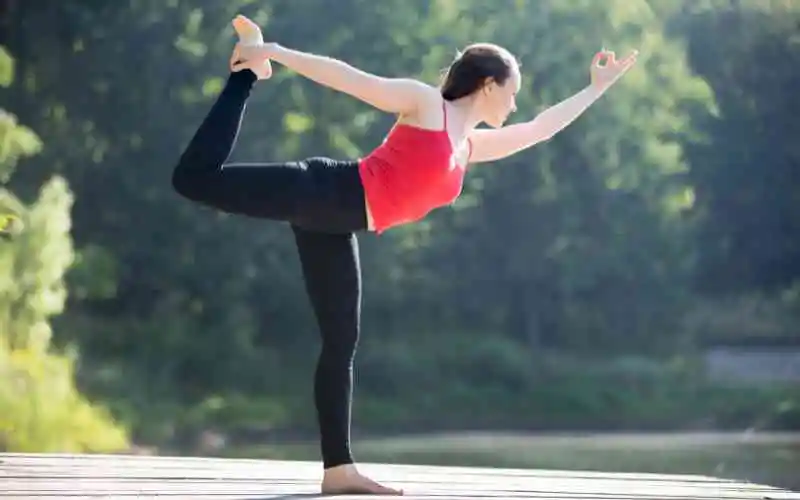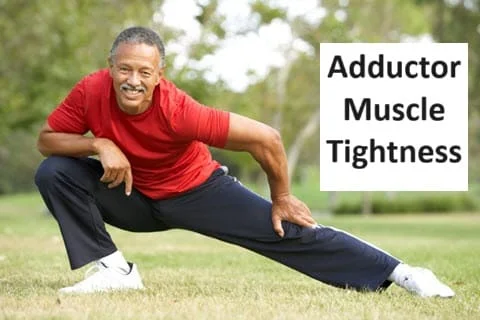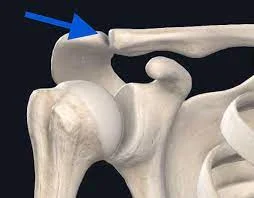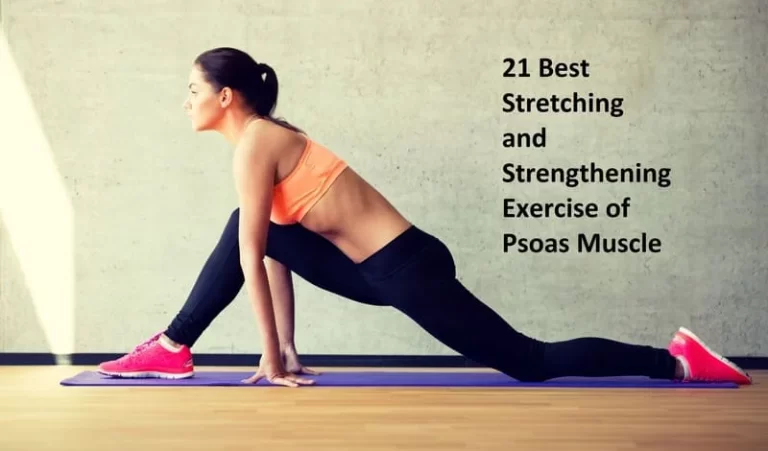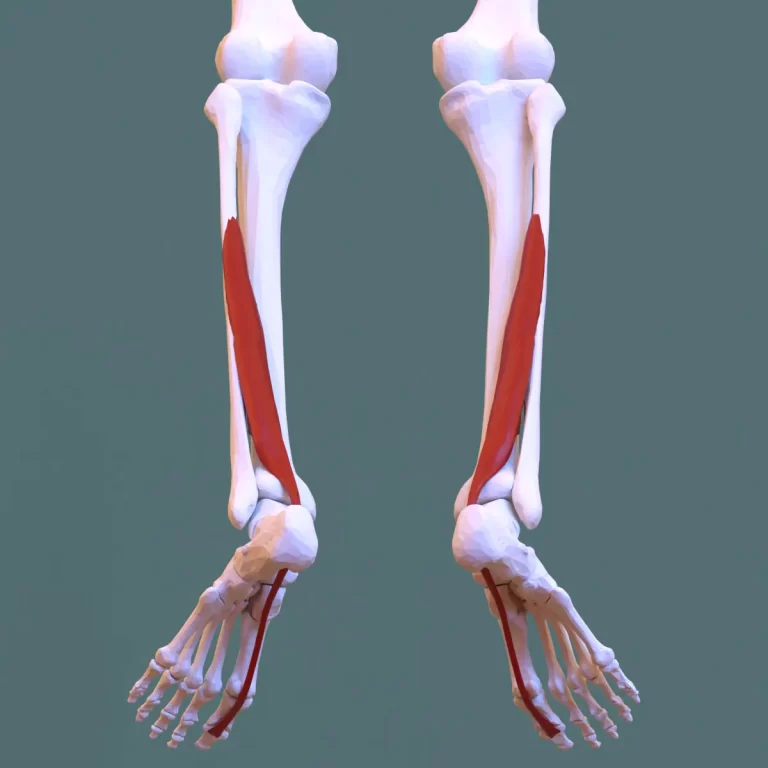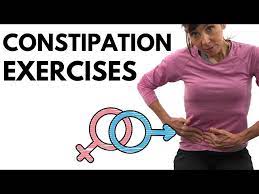Natarajasana (Dancer Pose)
What is Natarajasana
Natarajasana, also known as Dancer Pose, is a popular yoga asana that combines balance, strength, and flexibility. It is named after Lord Shiva, who is often depicted as the divine dancer in Hindu mythology.
It derives its name from the Sanskrit term for this yoga pose Natarajasana, which arrives from the terms ‘Nata’ meaning dancer or actor, ‘Raja’ meaning kind, and ‘Asana’ meaning posture. It is sometimes Different words for it from “Dancer’s Pose” and “Lord of the Dance Pose.”
There are two daily utilized deviations of this yoga asana. The boosted leg must be held with one hand, and in the second, in an evolved posture, the boosted foot must be held with both hands overhead.
How to Practice Natarajasana?
To begin with, stand in the Tadasana or mountain pose with your gaze fixed straight ahead.
- Move your weight onto your left leg and turn your right knee with your right foot flexing backward.
- Keep your right big toe with your right thumb, 1st, and 2nd fingers.
- Ensure that your left leg is straight and on the ground floor.
- Then, move your right shoulder such that your elbow points upward and stretch your right foot towards your head.
- At the same duration, lift your left arm forward such that it is aligned with your shoulder.
- Extend your backbone and your left arm such that you lean forward and arrive upward.
- Next, bring the tip of your left 1st finger to your left thumb such that your hands form the jnana mudra posture.
- Maintain this position for 10 to 15 seconds and breathe in deeply while your eyes stay fixed on your left hand.
- Lower your left arm to your side and get your right foot down to the ground floor.
- Lastly, relax your body in the Tadasana pose for a few seconds.
Replicate this entire cycle with your other side.
Natarajasana (Dancer Pose) Video
Benefits of doing Natarajasana Yoga
- Natarajasana yoga is all about coordination and balance. It maintains your shoulder, back, arms, and legs strong.
- Lord of the Dance pose even helps weight loss by boosting metabolism.
- This pose handles the digestive system.
- This pose is excellent for lengthening the body including hands, legs, waist, and abdomen.
- Natarajasana goods body balance and posture. Correcting posture creates the body less susceptible to aches or pain.
- This pose relaxes the brain, relieves stress, and enhances attention.
- Your body evolves flexibly with the daily practice of this pose.
Modifications and Variations
Bring this pose step by step, eliminating it along the path whenever essential. As you progress, create adjustments to advance yourself.
Need a Modification?
Place yourself near a wall so you can arrive out with your hand for balance if you require to.
If you have a problem bringing your lower leg up or reaching it, you could utilize a strap to help you.
Up for a Challenge?
When you feel very relaxed with the asana as illustrated above, start to perform the ensuing variations:
Perform your left foot into the crook of your left elbow. Lift your right arm up and after your back to attach with your left hand.
This is practically like a vertical rendition of Mermaid Pose.
Shift your grasp on your left foot so that your left elbow is suggesting up toward the ceiling. The left-hand grasps the outside of the foot and the right hand comes up and behind to keep the big toe side of the equal foot. This needs to arrive at a more in-depth backbend.
Once you have hold of your left foot with the left hand from above, move your right arm into a similar position and bring hold of the exact boosted foot. The position of your arms and feet is equal to that of a Full Pigeon. If you can not quite get your foot with both hands overhead, curl a strap around the foot to support and bridge the loop. Balance and deepen the back bend by booting the foot into the bound hands and lifting the chest.
Contraindications
- Avoid this asana if you have an injury and surgery in the legs, groins, hips, and shoulders.
- The person with arthritis must avoid this pose.
- Individuals suffering from severe back aches slipped discs, or bulging discs must avoid this asana.
- Don’t practice it if you are experiencing sacroiliac aches.
- It helps in low blood pressure.
- Individuals with carpal tunnel syndrome (medial nerve compression) must refrain from this asana.
Conclusion
Natarajasana is a fairly complex yoga pose. Practitioners must practice it regularly to be able to perfect it. Each yoga posture including Natarajasana is created to enhance your body in a few capacities. Individuals practice this asana such that they can follow a healthy lifestyle.
Regardless, the body can still suffer from an illness and injury. To be covered if such problems arise it is important to purchase a possible health insurance plan. Visit Bajaj Markets to learn what creates a better health insurance approach stand out.
FAQ
1. What is the history of Nataraja?
The ancientest free-standing stone sculptures of Nataraja were made by Chola queen Sembiyan Mahadevi. Nataraja gained particular significance and evolved into a symbol of majesty in Tamil Nadu. The dancing Shiva evolved as a part of Chola-era processions and religious festivals, a practice that continued subsequently.
2. Why is Natarajasana important?
It strengthens your shoulder, arms, legs, and back strong. Lord of the Natarajasana even aids weight loss by increasing metabolism. This posture regulates the digestive system. This posture is good for prolonging the body including hands, thighs, legs, waist, and abdomen.
3. What is the caution of Natarajasana?
Individuals suffering from dizziness should avoid the dancer pose. Avoid it if you suffer from peptic and duodenal ulcers. Individuals suffering from colitis should avoid the dance pose. Pregnant women should avoid practicing Natarajasana.
4. What muscles are used in Natarajasana?
Natarajasana benefits the following muscles and hence can be included in the yoga series with the corresponding muscles Chest Lower Back, Biceps, Triceps, Hamstrings, Quadriceps, Gluteus, Psoas, and Hips.
5. What is the contraindication of Natarajasana?
Avoid it if you suffer from peptic and duodenal ulcers. Individuals suffering from colitis should avoid the Natarajasana posture. Pregnant females should avoid practicing Natarajasana. Individuals who have been analyzed with arthritis or osteoporosis must avoid doing this pose.

